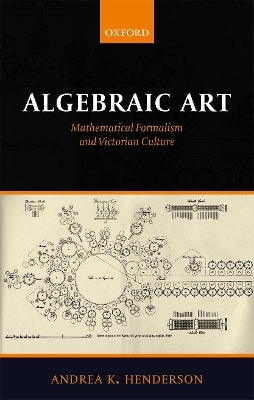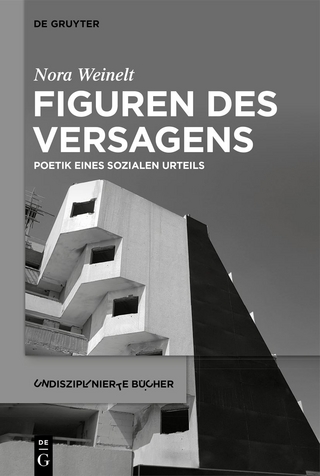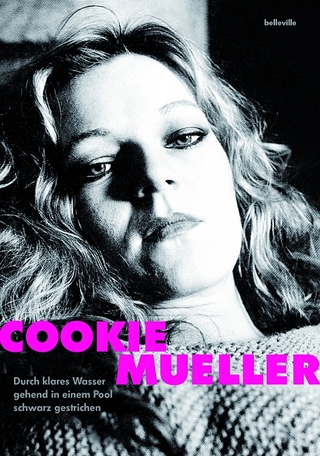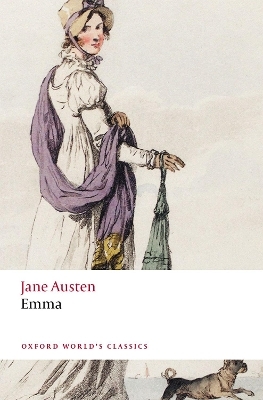
Algebraic Art
Oxford University Press (Verlag)
978-0-19-880998-2 (ISBN)
Algebraic Art explores the invention of a peculiarly Victorian account of the nature and value of aesthetic form, and it traces that account to a surprising source: mathematics. The nineteenth century was a moment of extraordinary mathematical innovation, witnessing the development of non-Euclidean geometry, the revaluation of symbolic algebra, and the importation of mathematical language into philosophy. All these innovations sprang from a reconception of mathematics as a formal rather than a referential practice--as a means for describing relationships rather than quantities. For Victorian mathematicians, the value of a claim lay not in its capacity to describe the world but its internal coherence. This concern with formal structure produced a striking convergence between mathematics and aesthetics: geometers wrote fables, logicians reconceived symbolism, and physicists described reality as consisting of beautiful patterns.
Artists, meanwhile, drawing upon the cultural prestige of mathematics, conceived their work as a 'science' of form, whether as lines in a painting, twinned characters in a novel, or wavelike stress patterns in a poem. Avant-garde photographs and paintings, fantastical novels like Flatland and Lewis Carroll's children's books, and experimental poetry by Swinburne, Rossetti, and Patmore created worlds governed by a rigorous internal logic even as they were pointedly unconcerned with reference or realist protocols. Algebraic Art shows that works we tend to regard as outliers to mainstream Victorian culture were expressions of a mathematical formalism that was central to Victorian knowledge production and that continues to shape our understanding of the significance of form.
Andrea Henderson is Professor of English at the University of California, Irvine, where she has taught since 2002. She came to UCI after 11 years teaching at the University of Michigan. She received her B.A. from the University of Chicago in 1986, and her Ph.D. in English Literature from the University of Pennsylvania in 1991. Professor Henderson's research is centered on nineteenth-century British culture. She is the author of Romantic Identities: Varieties of Subjectivity, 1774-1830 (Cambridge University Press, 1996), Romanticism and the Painful Pleasures of Modern Life (Cambridge University Press, 2008), and articles on subjects ranging from eighteenth-century embryology to Victorian photography.
Introduction
1: Geometry: Math for Math's Sake: Non-Euclidean Geometry and Aestheticism
2: Algebra: Symbolic Logic and the Logic of Symbolism
3: Analysis: Magic Mirrors: Formalist Realism in Victorian Photology and Photography
4: Analogy: The Physics and Poetics of Analogy
5: Invariant Forms: '[T]he bonds of verse' Form as Discipline
Coda: '[T]o bury Euclid deep in the living flesh'
| Erscheinungsdatum | 10.07.2018 |
|---|---|
| Zusatzinfo | 28 Illustrations |
| Verlagsort | Oxford |
| Sprache | englisch |
| Maße | 148 x 220 mm |
| Gewicht | 420 g |
| Themenwelt | Kunst / Musik / Theater ► Allgemeines / Lexika |
| Kunst / Musik / Theater ► Kunstgeschichte / Kunststile | |
| Geisteswissenschaften ► Philosophie | |
| Geisteswissenschaften ► Sprach- / Literaturwissenschaft ► Anglistik / Amerikanistik | |
| Mathematik / Informatik ► Mathematik ► Algebra | |
| ISBN-10 | 0-19-880998-0 / 0198809980 |
| ISBN-13 | 978-0-19-880998-2 / 9780198809982 |
| Zustand | Neuware |
| Haben Sie eine Frage zum Produkt? |
aus dem Bereich


